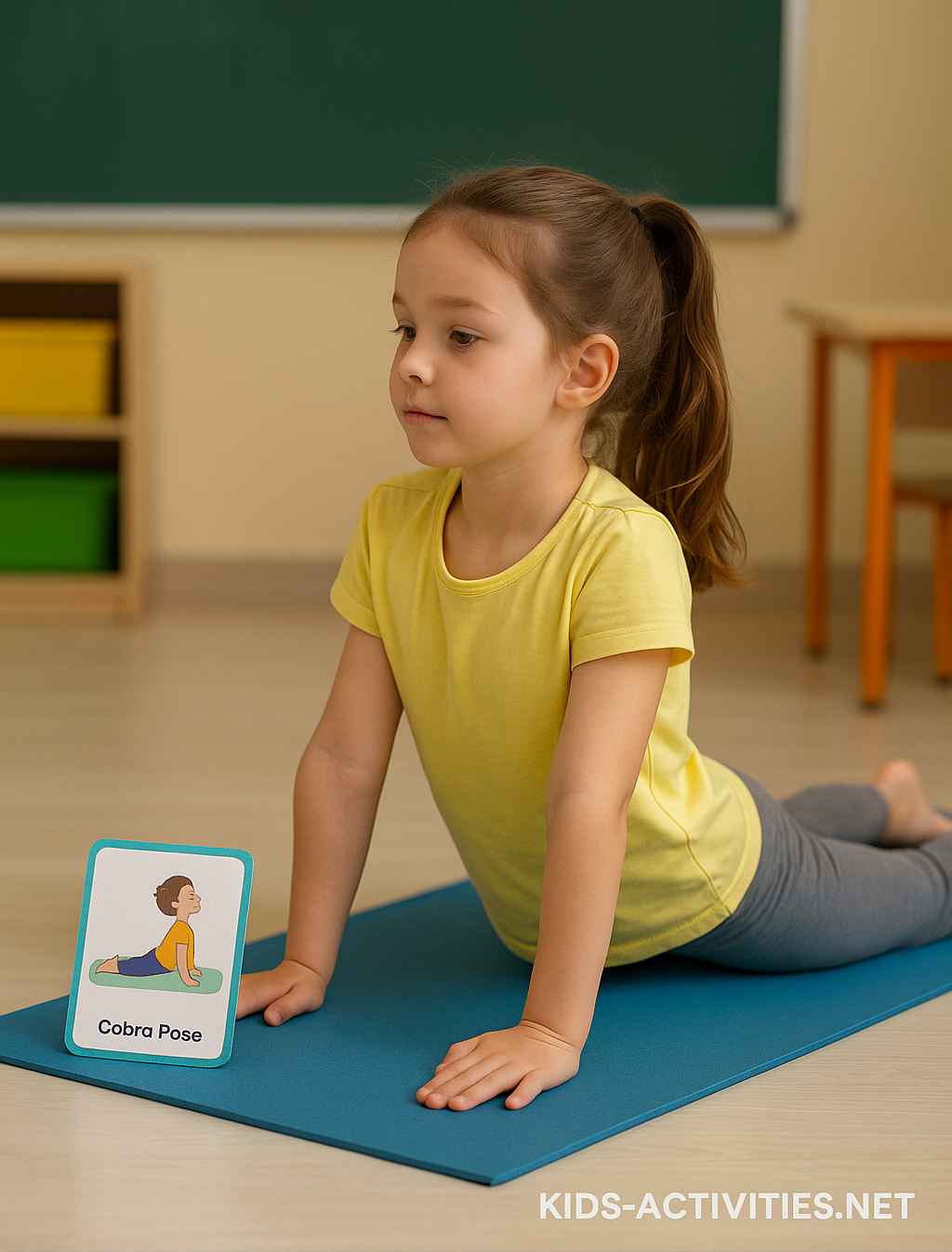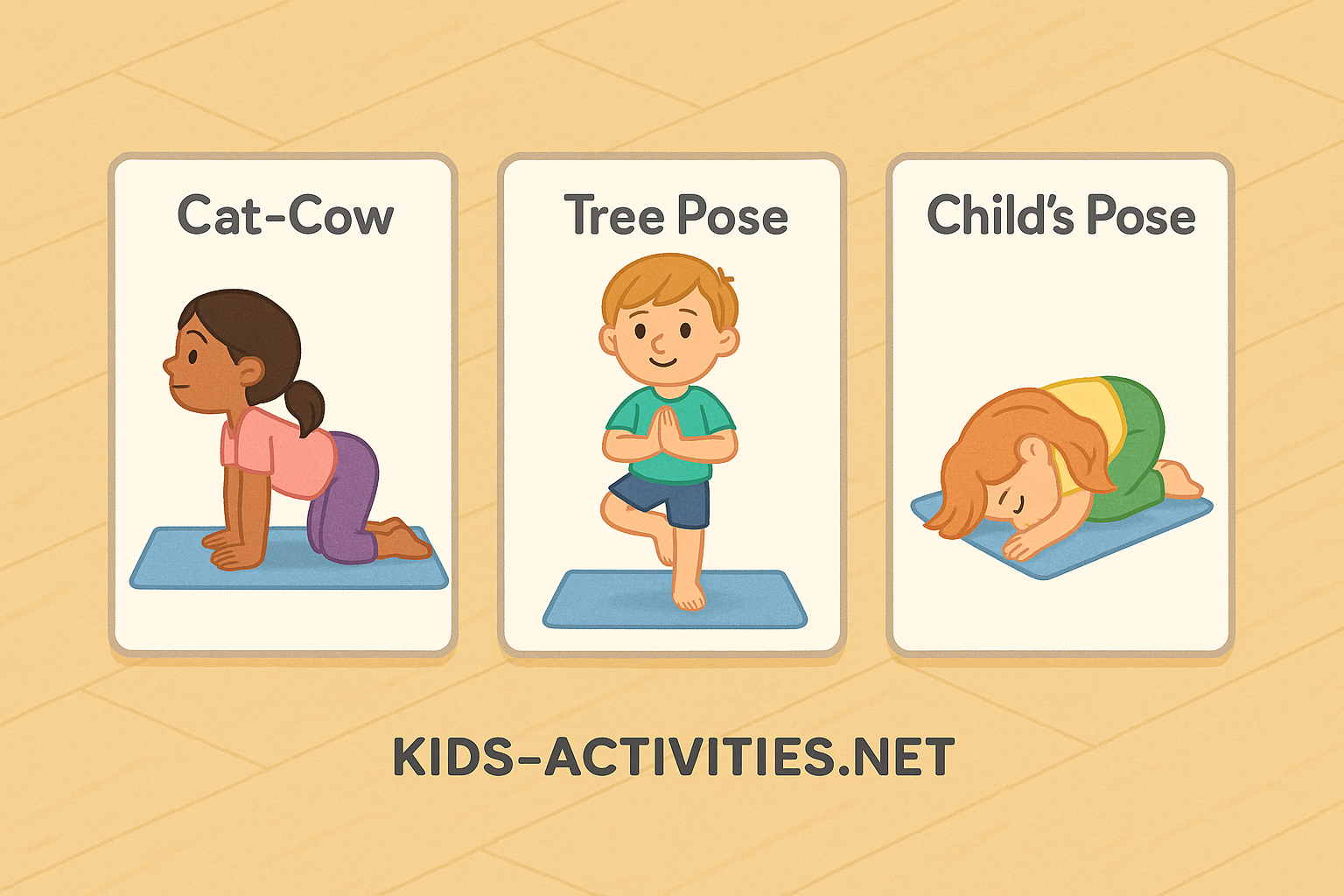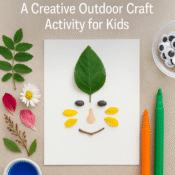
Yoga Cards for Kids’ Breaks: Mindful Movement Between Lessons
Why Kids Need Movement Breaks That Calm the Mind
Children today are more sedentary than ever—switching from classroom desks to screen time with little opportunity to reset their bodies and minds. This lack of physical intermission often leads to restlessness, poor focus, and emotional dysregulation.
Teachers and parents are increasingly turning to yoga cards as a simple, visual way to guide calm, energising breaks throughout the day. But do they work? And how can we make them part of a routine?
The Power of Visual Cues and Gentle Poses
Yoga combines gentle physical movement with deep breathing and mindfulness—making it ideal for kids. But reading from a list or following adult instructions can feel abstract for younger learners.
That’s where illustrated yoga cards shine:
- They offer visual structure without requiring literacy
- They encourage autonomous participation
- Each pose reinforces emotional regulation and sensory awareness
Research shows that short bursts of physical mindfulness—like yoga—can improve classroom engagement and reduce behavioural disruptions by up to 50%.
Step-by-Step: How to Use Yoga Cards During Breaks
Step 1: Create a Calm Ritual
- Designate a break area with a mat or carpet
- Use soft music or a “yoga bell” to signal the start
- Introduce the cards as a fun game, not a task
Step 2: Choose 3–5 Poses per Break
Select cards that match the energy level:
- Morning boost: Mountain Pose, Sun Salute, Warrior
- Midday reset: Cat-Cow, Tree Pose, Downward Dog
- Afternoon calm-down: Child’s Pose, Butterfly, Savasana
Encourage kids to copy the card poses independently or follow a peer leader.
Step 3: Use Themes or Storytelling
Make yoga feel magical with narrative:

- “Jungle Yoga” with animal-themed cards
- “Space Mission” where each pose prepares for take-off
- “Weather Flow” where movements mimic clouds, wind, and sun
This builds engagement and helps children visualise mindfulness in motion.
Step 4: Reflect and Reset
After each session, allow 1 minute of quiet breathing. Ask simple questions:
- “What pose felt strongest?”
- “How did your body feel after the stretch?”
- “What breath helped you feel calmer?”
This fosters mind–body awareness and develops emotional vocabulary.
Free Resources to Get Started
Download our Yoga Card Starter Pack (PDF includes printable cards + teacher tips):
12 Kid-Friendly Yoga Poses with Instructions
Themed Sets (Animals, Weather, Imagination)
Visual Cues for Breathing Techniques
Reflection Prompts for After-Activity Discussion
Editable Pose Cards for Customisation
Teacher Use License Included
Click here to download the free PDF kit
Smart Tips for Parents and Teachers
- Laminate the cards for durability and classroom use
- Use visual timers for 2–5 minute break blocks
- Encourage daily use so poses become familiar
- Allow choice-based play—let kids pick the cards
- Integrate with morning routines or transition times
Pro Tip: Assign a “Yoga Leader of the Day” to select cards and lead the group!
What Other Families Are Saying
“My daughter uses the cards during homework breaks. It’s changed how she handles frustration.” —Emily, NSW
“We’ve laminated them and keep them in our calm-down corner at school. Even our most active students love it!” —Teacher, VIC
Explore More Movement-Based Calm Activities
- Mindful Breathing Crafts for Classrooms
- Pinwheel Science for Focus & Calm
- Creative Ownership and Responsibility
Wrap-Up: Calm Kids, Better Learning
Yoga cards offer a low-prep, high-impact tool for supporting children’s mental and physical wellbeing throughout the day. Whether at home or in the classroom, just a few mindful movements between lessons can transform how kids feel, think, and learn.
Recommended Age:
Best for ages 4–10.
Explore more under Mindful Moments Activities for Ages 6–8
FAQ Section
Q: Do yoga cards need to be used with a trained instructor?
A: Not at all. They’re designed to be intuitive and safe when used with adult supervision.
Q: Can these be done in small spaces like apartments or classrooms?
A: Yes! Most poses need just a small mat-sized area.
Q: Are there cultural concerns with yoga in public schools?
A: Our cards focus on mindfulness and movement, without spiritual language—making them suitable for secular classrooms.




